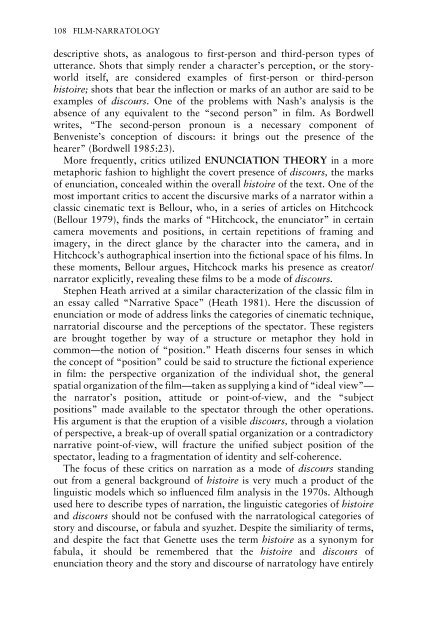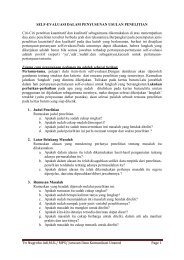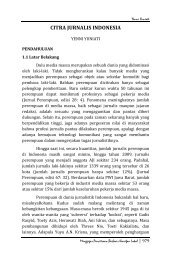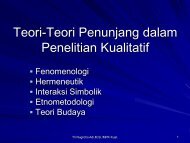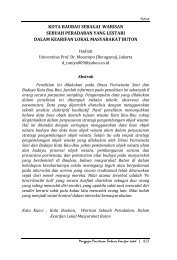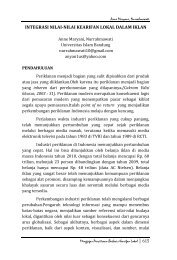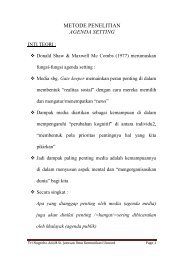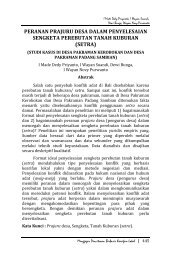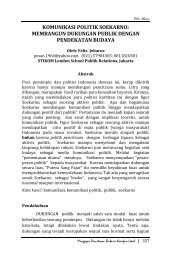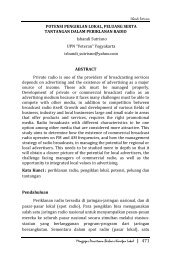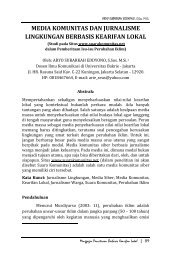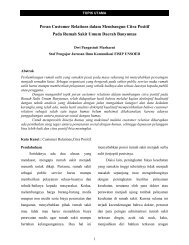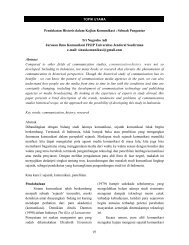New Vocabularies in Film Semiotics
New Vocabularies in Film Semiotics
New Vocabularies in Film Semiotics
Create successful ePaper yourself
Turn your PDF publications into a flip-book with our unique Google optimized e-Paper software.
108 FILM-NARRATOLOGY<br />
descriptive shots, as analogous to first-person and third-person types of<br />
utterance. Shots that simply render a character’s perception, or the storyworld<br />
itself, are considered examples of first-person or third-person<br />
histoire; shots that bear the <strong>in</strong>flection or marks of an author are said to be<br />
examples of discours. One of the problems with Nash’s analysis is the<br />
absence of any equivalent to the “second person” <strong>in</strong> film. As Bordwell<br />
writes, “The second-person pronoun is a necessary component of<br />
Benveniste’s conception of discours: it br<strong>in</strong>gs out the presence of the<br />
hearer” (Bordwell 1985:23).<br />
More frequently, critics utilized ENUNCIATION THEORY <strong>in</strong> a more<br />
metaphoric fashion to highlight the covert presence of discours, the marks<br />
of enunciation, concealed with<strong>in</strong> the overall histoire of the text. One of the<br />
most important critics to accent the discursive marks of a narrator with<strong>in</strong> a<br />
classic c<strong>in</strong>ematic text is Bellour, who, <strong>in</strong> a series of articles on Hitchcock<br />
(Bellour 1979), f<strong>in</strong>ds the marks of “Hitchcock, the enunciator” <strong>in</strong> certa<strong>in</strong><br />
camera movements and positions, <strong>in</strong> certa<strong>in</strong> repetitions of fram<strong>in</strong>g and<br />
imagery, <strong>in</strong> the direct glance by the character <strong>in</strong>to the camera, and <strong>in</strong><br />
Hitchcock’s authographical <strong>in</strong>sertion <strong>in</strong>to the fictional space of his films. In<br />
these moments, Bellour argues, Hitchcock marks his presence as creator/<br />
narrator explicitly, reveal<strong>in</strong>g these films to be a mode of discours.<br />
Stephen Heath arrived at a similar characterization of the classic film <strong>in</strong><br />
an essay called “Narrative Space” (Heath 1981). Here the discussion of<br />
enunciation or mode of address l<strong>in</strong>ks the categories of c<strong>in</strong>ematic technique,<br />
narratorial discourse and the perceptions of the spectator. These registers<br />
are brought together by way of a structure or metaphor they hold <strong>in</strong><br />
common—the notion of “position.” Heath discerns four senses <strong>in</strong> which<br />
the concept of “position” could be said to structure the fictional experience<br />
<strong>in</strong> film: the perspective organization of the <strong>in</strong>dividual shot, the general<br />
spatial organization of the film—taken as supply<strong>in</strong>g a k<strong>in</strong>d of “ideal view”—<br />
the narrator’s position, attitude or po<strong>in</strong>t-of-view, and the “subject<br />
positions” made available to the spectator through the other operations.<br />
His argument is that the eruption of a visible discours, through a violation<br />
of perspective, a break-up of overall spatial organization or a contradictory<br />
narrative po<strong>in</strong>t-of-view, will fracture the unified subject position of the<br />
spectator, lead<strong>in</strong>g to a fragmentation of identity and self-coherence.<br />
The focus of these critics on narration as a mode of discours stand<strong>in</strong>g<br />
out from a general background of histoire is very much a product of the<br />
l<strong>in</strong>guistic models which so <strong>in</strong>fluenced film analysis <strong>in</strong> the 1970s. Although<br />
used here to describe types of narration, the l<strong>in</strong>guistic categories of histoire<br />
and discours should not be confused with the narratological categories of<br />
story and discourse, or fabula and syuzhet. Despite the similiarity of terms,<br />
and despite the fact that Genette uses the term histoire as a synonym for<br />
fabula, it should be remembered that the histoire and discours of<br />
enunciation theory and the story and discourse of narratology have entirely


